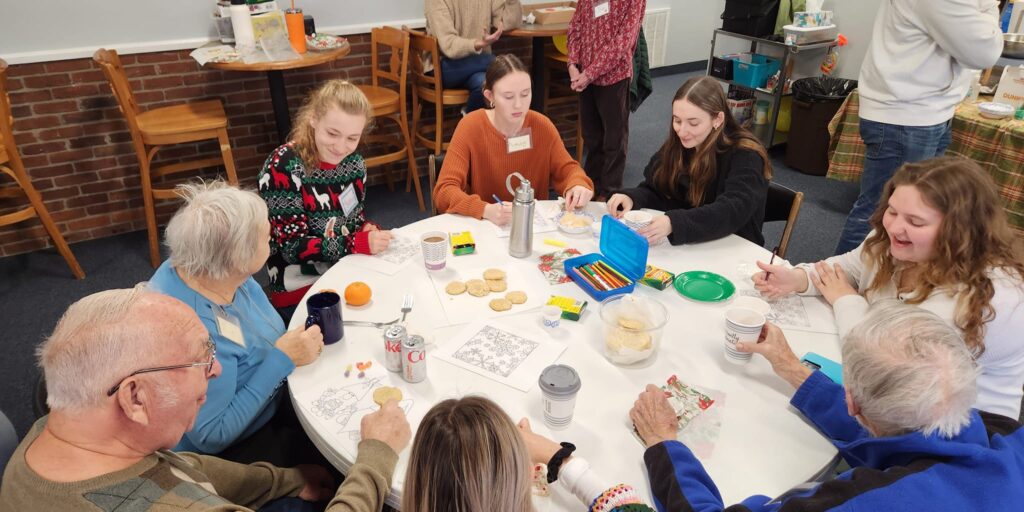2023 Crown Communities Award winner: Community collaborates to build respite program for caregivers
Being a caregiver can be stressful, around-the-clock work. Recent studies have found that the number of available at-home caregivers in the U.S. is not keeping pace with the rising needs of a rapidly aging generation. Faced with these challenges, one community in New York State came together to help take care of its caretakers—and demonstrated a masterclass of community collaboration in the process.
Livingston County, N.Y., has a population of 61,500, around 20% of whom are above the age of 60. In 2015, community members from several organizations determined there was a “critical need” to provide relief to its often-overworked caregivers. “One of the reasons it continues to be gap is because we don’t have any homecare agencies headquartered in our county,” says Sue Carlock, director of the Livingston County Office for the Aging (LCOFA). “And there’s a shortage everywhere. Put that on top of being a rural county—it’s hard for aides to go all over the place.”
And so, with the initial help of an AmeriCorps VISTA grant, the Home Away From Home Respite Program was born. The collaborative program was designed to give caregivers a twice-weekly break by providing a safe place for them to bring their care receivers twice a week for four hours at a time. Now approaching its tenth year, the program has continued to receive accolades from caregivers and receivers alike and is now a recipient of American City & County’s 2023 Crown Communities Award.
While caregivers are given time for themselves under the program, care receivers attending the program can socialize outside of their homes and participate in planned activities with college student volunteers.
“As the program gained traction, feedback from caregivers, care receivers and volunteers was overwhelmingly positive,” the LCOFA noted in its Crown Communities application. “The impact on individuals and their loved ones was evident, with many expressing gratitude for the respite and the supportive environment the program provided.”
They say it takes a village to raise a child, and, as this program demonstrates, it’s no different when it comes to caring for seniors with extra care requirements. Numerous community groups have been essential to building and continuing the respite program, including LCOFA, the Livingston County Coalition of Churches, State University of New York College at Geneseo, the Alzheimer’s Association, Geneseo Interfaith Center, Noyes Caregiver Resource Center and NYS Caregiving and Respite Coalition.
The student volunteers from SUNY Geneseo have played a critical role in the program since its inception, spending time with the care receivers each week after undergoing training provided by the NYS Caregiving and Respite Coalition and Noyes Caregiver Resource Center. Most of the students volunteer as part of their class requirements for a Neuro-Psych class.
“The program takes place in the Geneseo Interfaith Center, so it’s just a short walk from the college campus,” says Christa Barrows, program coordinator for Home Away From Home. “Students gain a lot of experience that complements their education, and we’ve even had students express interest in continuing to help after they’ve completed their course requirements through the Neuro-Psych class.”
When the program launched in 2015, the AmeriCorps VISTA grant funded a full-time program coordinator. After the VISTA grant ended in 2018, the community, seeing the program’s value, pulled together to fight for it and accumulated donations and new waves of grants to keep it afloat. It now operates with a budget of $20,000 per year to cover staffing, training, materials and program logistics. Livingston CARES, a local nonprofit, also contributed funding, as did a family foundation grant. Additionally, mini grants from the NYS Caregiving and Respite Coalition helped to support the program.
“I don’t think this could be done just by one agency or one person,” Barrows says. “That is one wonderful thing about our community: there are a lot of good collaborations among organizations and leadership.”
“They have a can-do attitude and make things happen,” Carlock adds.
The program can accept up to 10 regular care receivers at a time, with about 10-12 college student volunteers participating and taking shifts each semester to look after and spend time with them.
Regarding advice for kickstarting such a program, Barrows says to keep an eye out for grant opportunities, including grants from the Administration for Community Living. Barrows also stressed that “collaborations are key.”
“Make sure that you have a good network, that you have a good relationship with all the agencies involved,” Barrows says. “It’s always about people, in anything you do in life.”
That last sentiment is also why, according to Carlock and Barrows, the Home Away From Home Respite Program has been worth fighting for.
“Just because a person has a difficult diagnosis, the world doesn’t come to a crashing end,” Barrows adds. “It doesn’t mean there is no hope. Programs like these allow them to have a good quality of life. It’s a win-win all around.”





















Great article and two of the seniors in the picture are my parents. They enjoy the program and can’t wait to tell me about conversations they have with the students.
Thank you to the students and the great organization that takes care of the seniors while giving the much deserved time off to the care givers.